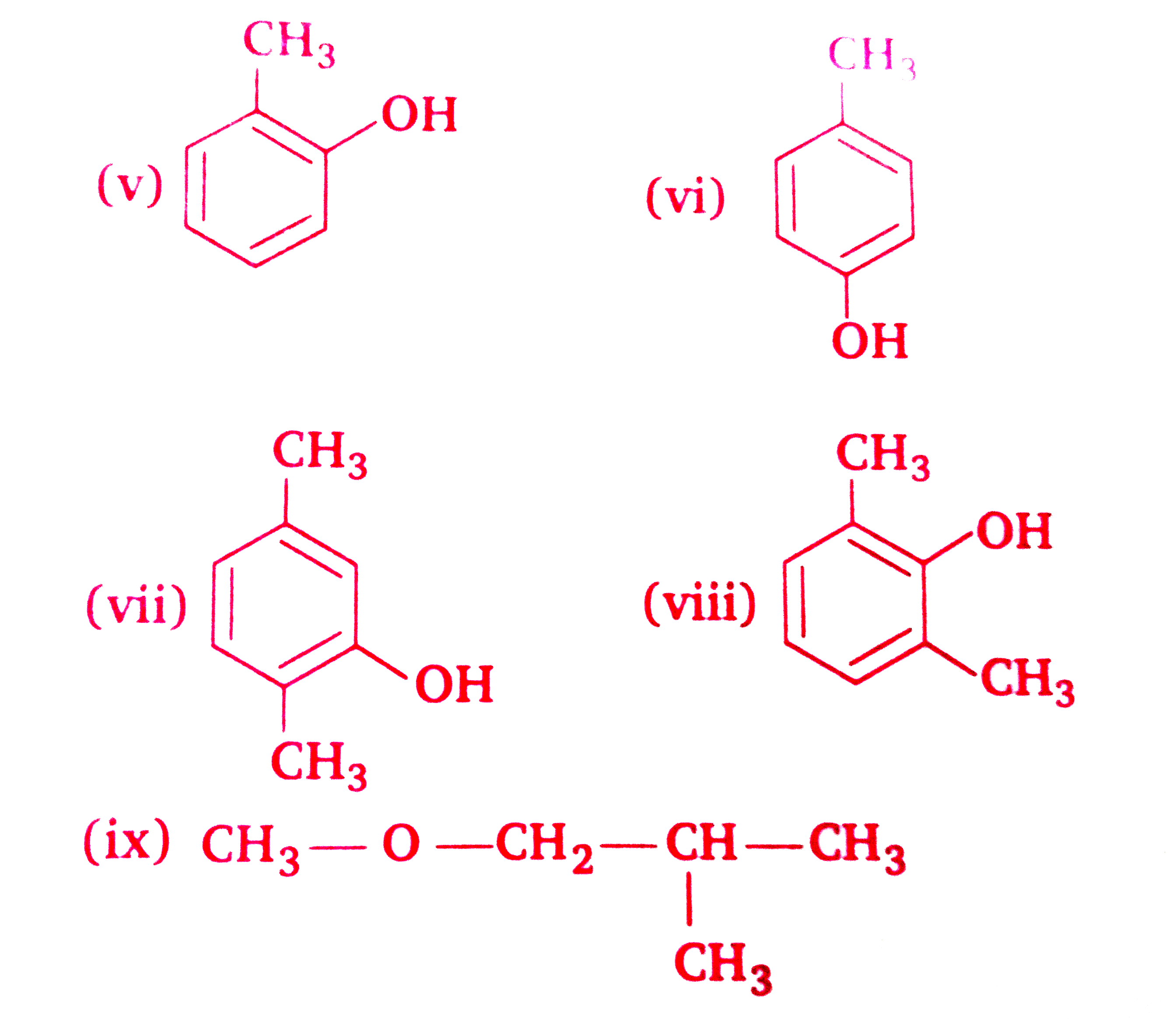Identify the saturated compounds :
(i) CH3CH2CH=O
(ii) C2H5CH=CH2
(iii) C2H5OH
(iv) CH2=CHCOOHSolution in Bengali
(i) CH3CH2CHO
(ii) CH3CH2OH.
Topper's Solved these Questions
- BOOK - CHHAYA PUBLICATIONCHAPTER - ORGANIC CHEMISTRY : BASIC PRINCIPLES AND TECHNIQUES EXERCISE - SHORT - TYPE QUESTIONS17videos
ORGANIC CHEMISTRY : BASIC PRINCIPLES AND TECHNIQUES
- BOOK - CHHAYA PUBLICATIONCHAPTER - MODEL QUESTIONS PAPER EXERCISE - SET III (SECTION II) (GROUP D )12videos
MODEL QUESTIONS PAPER
- BOOK - CHHAYA PUBLICATIONCHAPTER - P-BLOCK ELEMENTSEXERCISE - PRACTICE SET 7 (ANSWER THE FOLLOWING QUESTIONS) : -17videos
P-BLOCK ELEMENTS
Similar Questions
The bond dissociation energy of Csp3−H is smaller than that of Csp−H bond - why?
View SolutionAt 25∘ C , the solubility product of CaF2 is 4×10−11 . At that temperature , calculate the solubility in its saturated solution and molar concentration of the ions produced.
View SolutionWhy does R3P=O exist but R3N=O does not (R = alkyl group ) ?
04:15View SolutionWrite the IUPAC names of the following compounds (i) {:(CH_(3)-CH-CH-CH_(3)),(" | |"),(" "C_(2)H_(5) " C"_(2)H_(5)):} (ii) (CH_(3))_(3)"CC"_(2)H_(5)
04:15View SolutionConsider the reaction: (i). (CH_(3))_(2)CH-CH_(2)Broverset(C_(2)H_(5)OH)to(CH_(3))_(2)CH-CH_(2)-O-C_(2)H_(5)+HBr (ii). (CH_(3))_(2)CH-CH_(2)Broverset(C_(2)H_(5)O^(-))to(CH_(3))_(2)CH-CH_(2)-OC_(2)H_(5)+Br^(-) The mechanisms of reaction (i) and (ii) are respectively.
01:07View SolutionCondiser the reactions,
(i) (CH3)2CH−CH2BrC2H5OH−−−−→(CH3)2CH−CH2OC2H5+HBr
(ii) (CH3)2CH−CH2BrC2H5O−−−−−−→(CH3)2CH−CH2OC2H5+Br−
The mechanism of reactions (i) and (ii) are respectively :03:03View SolutionCondiser the reactions,
(i) (CH3)2CH−CH2BrC2H5OH−−−−→(CH3)2CH−CH2OC2H5+HBr
(ii) (CH3)2CH−CH2BrC2H5O−−−−−−→(CH3)2CH−CH2OC2H5+Br−
The mechanism of reactions (i) and (ii) are respectively :06:24View SolutionThe IUPAC name of this compound {:(CH_(3)-CH-CH_(2)-CH-COOH),(" |"" |"),(" "C_(2)H_(5)" "CH_(3)):}
02:49View Solutionनिम्नलिखित यौगिक का आई० यू० पी० ए० सी० नाम लिखिए ।
CH3 |CH3−CH−CH−CH2−CH=CH2 | C2H504:15View Solutionनिम्न यौगकों के IUPAC नाम लिखिये-
(i) CH3 |CH3−CH−CH−C−CH3 | | | CH3 OH CH3
(ii) H3C−CH−CH2−CH−CH−CH3 | | | OH OH C2H5
(iii) CH3−CH−CH−CH3 | | OH OH
(iv) HO−CH2−CH−CH2−OH | OH

(x) C6H5−O−C2H5
(xi) C6H5−O−C7H15(n−)
(xii) CH3−CH2−O−CH−CH2−CH3 | CH303:47View SolutionWrite the IUPAC name of the CH_(3)-underset(OH)underset(|)CH-CH_(2)-underset(OH)underset(|)CH-underset(C_(2)H_(5))underset(|)CH-CH_(2)-CH_(5) compound.
04:17View SolutionConsider the reaction: (i) (CH_(3))_(2)CH-CH_(2)Br overset(C_(2)H_(5)OH)to(CH_(3))_(2)CH-CH_(2)OC_(2)H_(5)+HBr (ii) (CH_(3))_(2)CH-CH_(2)Br overset(C_(2)H_(5)O^(-))to(CH_(3))_(2)CH-CH_(2)OC_(2)H_(5)+Br^(-) The mechanisms of reactions (i) and (ii) are respectively:
03:49View SolutionConsider the reactions: (i) (CH3)2CH−CH2BrC2H5OH−−−−→(CH3)2CH−CH2OC2Hd5+Br−
(ii) (CH3)2CH−CH2BrC2H5O−−−−−−→(CH3)2CH−CH−(2)OCH2H5+Br−
The mechanism of reactions (i) and (ii) are respectively-04:43View Solutionनिम्न अभिक्रियाओं पर विचार कीजिए
(i) (CH3)2CH−CH2BrC2H5OH−−−−→(CH3)2CH−CH2OC2H5+HBr
(ii) (CH3)2CH−CH2BrC2H5O−−−−−−→(CH3)2CH−CH2OC2H5+Br−
अभिक्रियाएँ (i) और (ii) की क्रियाविधियाँ क्रमशः हैं00:52View SolutionWhich of the following compounds will exhibit pro-cons isomerism. (i) (CH_(3))_(2)C = CH-C_(2)H_(5) (Ii) CH_(2) = CBr_(2) (iii) C_(6)H_(5)-CH=CH-CH_(3) (iv) CH_(3) -CH = C Cl-CH_(3)
04:17View Solution

